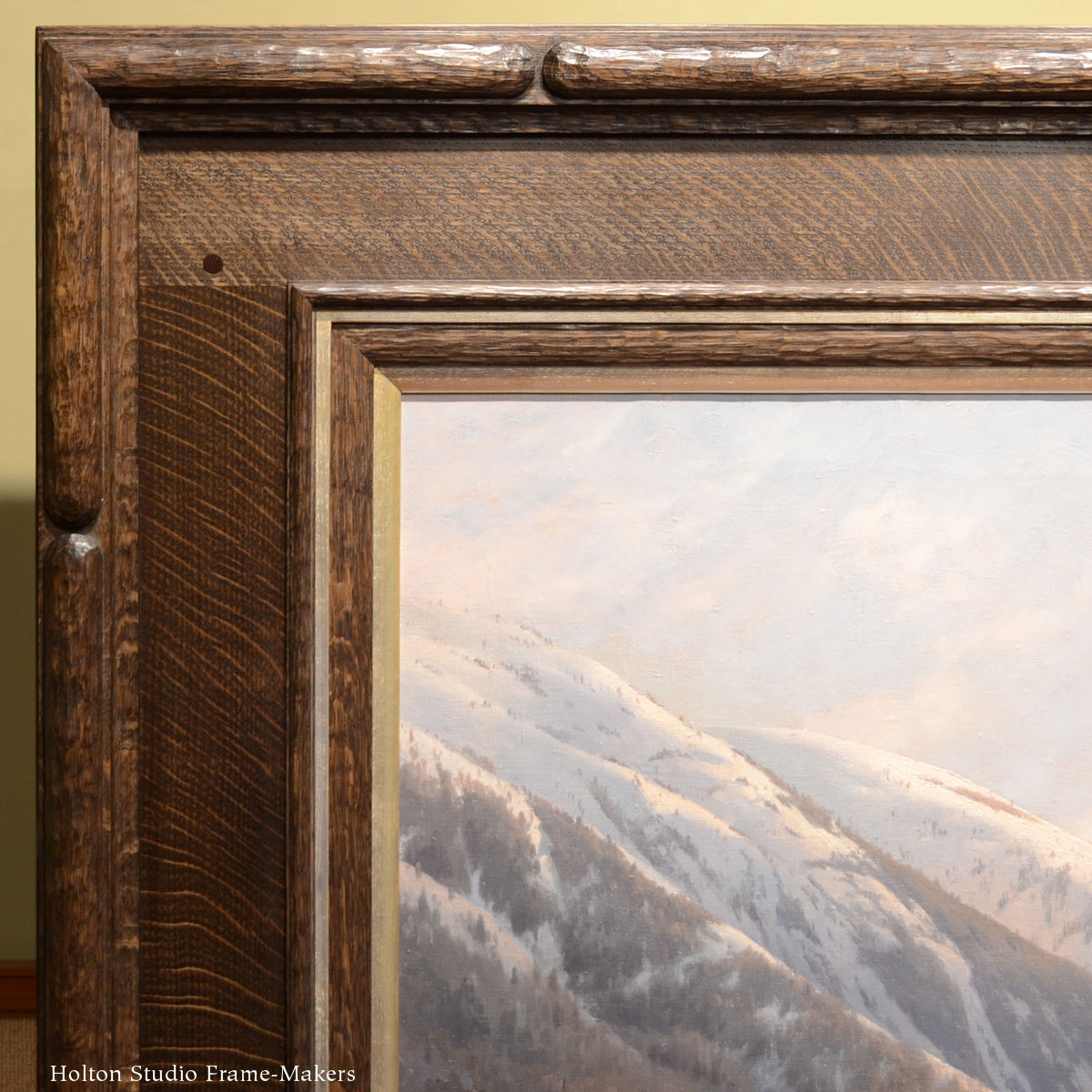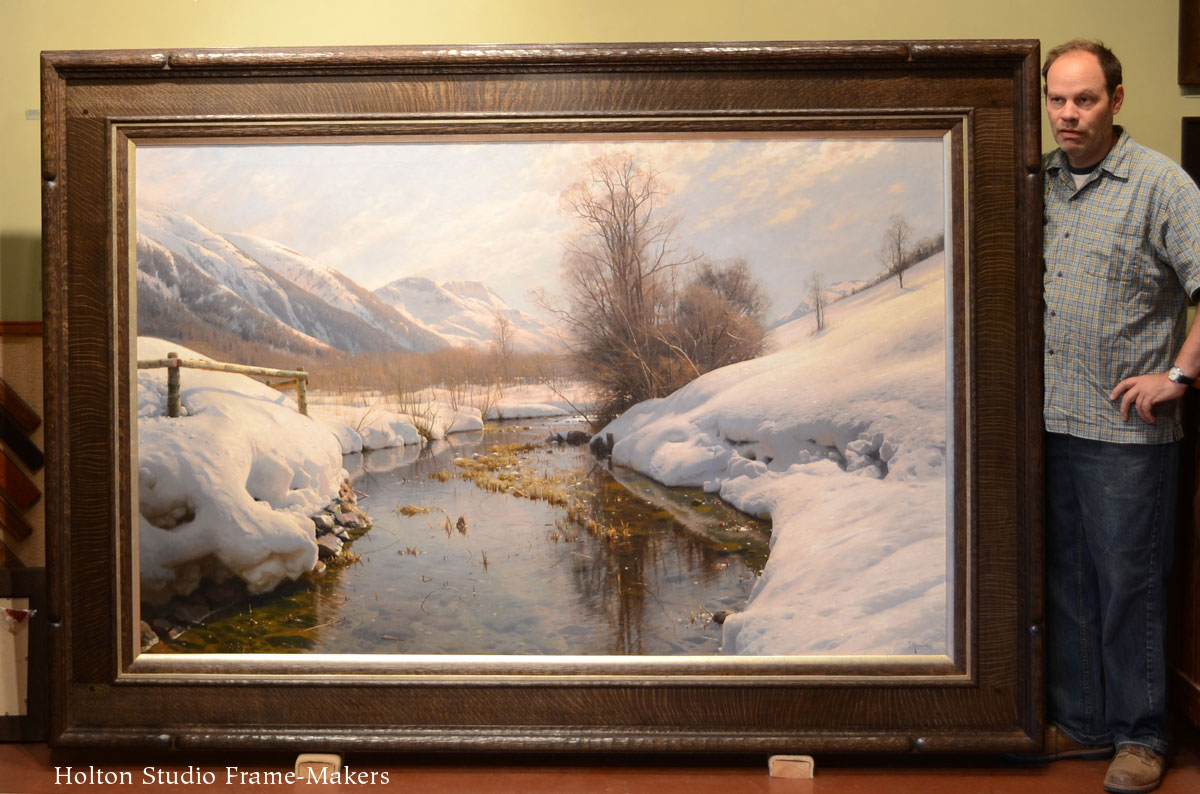1919. Oil on canvas, 50-1/2″ x 79″. Framed in carved Cassetta—10″ total width, in quartersawn white oak (Dark Weathered Oak stain), with slip and insert in white gold-leafed oak.
Three artists visiting us on three different days saw this painting in the shop, and (this sounds like a joke, but it’s true) the first one remarked, “Look at the snow! Do you know how hard it is to paint snow like that?!” The second one said, “Look at the water! Do you know how hard it is to paint water like that?!” and the third one said, “Look at those trees! Do you know how hard it is to paint leafless trees like that?!” We concluded that this painting, which one of the painters estimated would have taken Monsted the better part of a year, was truly a tour de force—meant to be at least as much a display of his technique as it was a work of praise for the beauty of winter in St Moritz.
This is the biggest painting we’ve framed so far (late 2013; be sure to see the last picture for a sense of its size). It’s a good example of the somewhat counter-intuitive principle that a bright scene is usually well-served by the foil, or complement, of a dark frame—although the frame’s not too dark but is consistent with the values in the shadows. While being an all-out piece of workmanship that fully honors the painting, it doesn’t upstage the painting but delivers the eye to it. The alternating white gold elements soften the transition, and enables the frame to emphasize the key aspect of light and shadow which makes the painting so compelling.
The cassetta frame has 4 mitered inner moldings, including the liner, and a mitered cap molding, on either side of a mortise-and-tenon flat, as well as a back frame to build it up leaving no gap between the wall and the frame.


